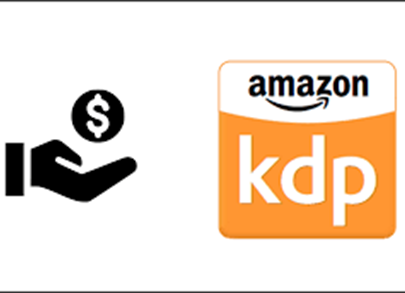Essential Tools Every Freelance Writer Needs in 2024
Introduction In 2024, the world of freelance writing has become more dynamic and fast-paced than ever. The surge in digital platforms, businesses going online, and the rise of content marketing have all fueled a growing demand for skilled writers. To thrive in this competitive landscape, having access to the right freelance writing tools is no longer a luxury—it’s a necessity. Writers today are not only expected to craft high-quality, engaging content, but they must also meet tight deadlines, juggle multiple projects, and maintain strong communication with clients. Without the right tools, managing these demands can be overwhelming. Fortunately, technology has empowered freelance writers in incredible ways. From sophisticated word processors to AI-driven tools that check grammar and style, today’s freelance writing toolkit is filled with solutions that make work more efficient. These tools enhance productivity by automating time-consuming tasks, such as proofreading, research, and even brainstorming new content ideas. Moreover, they offer creative support, allowing writers to focus on their craft without being bogged down by administrative or technical hurdles. Having the right writing essentials also means being able to stay organized and manage time effectively. With a wide range of tools available for tracking hours, managing projects, and streamlining client communication, freelance writers can now handle even the most complex assignments with confidence. Whether you’re just starting your writing career or are a seasoned professional looking to level up, the tools we’ll discuss can make a significant impact on your workflow and results. This post will explore the essential tools every freelance writer needs in 2024, providing you with a comprehensive guide to the best software and platforms available today. Whether you want to improve your productivity, boost creativity, or streamline your business operations, these tools will help you stay ahead in the ever-evolving world of freelance writing. Why Having the Right Freelance Writing Tools Matters In the fast-paced world of freelance writing, the right freelance writing tools are critical for success. These tools help writers improve productivity, manage their time, and focus on creativity. Without them, juggling multiple projects and meeting tight deadlines can feel overwhelming, leading to stress and missed opportunities. The right tools empower writers to work more efficiently, allowing them to produce high-quality content without burning out. Productivity is one of the biggest challenges freelance writers face. Time management tools help structure your day, track hours, and prioritize tasks. These tools can significantly boost efficiency by helping you allocate time appropriately and maintain focus on important tasks. Staying organized is equally essential. Tools like project management apps allow you to break down large assignments into smaller tasks, set reminders, and ensure that nothing falls through the cracks. This not only keeps you on top of your work but also builds trust with clients through timely deliveries. Beyond improving organization and time management, writing essentials can greatly enhance the quality of your content. Editing tools, such as grammar checkers and style guides, help catch errors that might otherwise go unnoticed. They ensure your writing is clear, polished, and free from common mistakes. Plagiarism checkers provide an added layer of confidence, guaranteeing that your work is 100% original. With higher-quality content, you’re more likely to attract premium clients and gain referrals. Ultimately, having the right freelance writing tools can open doors to more opportunities. You’ll not only deliver better content but also meet deadlines consistently, impress clients, and stand out in the competitive freelance market. The right tools let you focus on what matters most: writing creatively, delivering exceptional work, and growing your freelance business. Writing and Editing Tools for Freelance Writers To produce top-quality content, every freelance writer needs reliable writing and editing tools. These tools not only help you create but also polish your work to meet professional standards. Whether it’s drafting, editing, or ensuring originality, having the right freelance writing tools in your arsenal can significantly enhance the quality of your output. Word Processing Software Word processing software is the foundation of any freelance writer’s workflow. Popular tools like Google Docs, Microsoft Word, and LibreOffice are essential for drafting and editing content. Google Docs, for example, offers real-time collaboration, which is incredibly useful when working with clients or editors. It allows multiple users to comment and make suggestions on a document, speeding up the feedback process. Microsoft Word remains a go-to option for many, especially for its comprehensive formatting options and offline capabilities. Auto-save features, available in both Google Docs and Microsoft Word, ensure that you never lose your work in case of a sudden system shutdown. For those looking for a free alternative, LibreOffice offers a fully functional word processor with a robust set of features. Cloud access in these tools means you can work from any device, making them invaluable for freelance writers who need flexibility. Grammar and Style Checkers Even the most experienced writers benefit from using grammar and style checkers. Tools like Grammarly, ProWritingAid, and Hemingway Editor are indispensable for catching errors and improving the clarity of your writing. Grammarly offers real-time suggestions for fixing grammatical mistakes, punctuation errors, and awkward sentence structures, making it a favorite among freelancers. Its premium version also checks for tone and word choice, ensuring your writing is not only correct but also engaging. ProWritingAid is another excellent tool, known for its in-depth reports on style, readability, and overused words. It offers insights that go beyond basic grammar, helping you improve the overall flow of your writing. The Hemingway Editor focuses on simplifying complex sentences, ensuring your content is concise and easy to read. By using these tools regularly, you can maintain consistency in your writing, producing content that is both professional and error-free. Plagiarism Checkers Ensuring the originality of your work is crucial to maintaining credibility in freelance writing. Plagiarism checkers like Copyscape, Turnitin, and Grammarly’s built-in plagiarism detection feature are essential for verifying that your content is unique. Copyscape is one of the most widely used tools for this purpose, allowing you to quickly check whether your content matches any existing work










